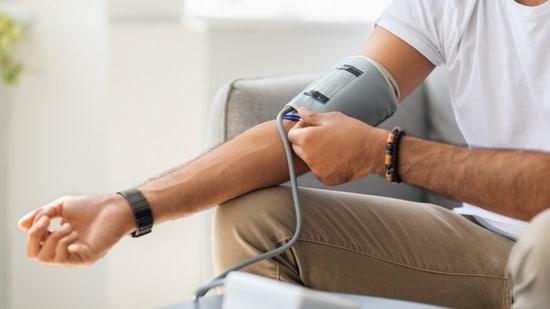Cardiologist Shares Common Mistakes People Make While Checking Blood Pressure
Think you know how to check your blood pressure at home? You might want to double-check — no pun intended. In a post that’s been getting some buzz, cardiologist Dr. Dmitry Yaranov, MD, says most people are doing it wrong. And that’s not just a small detail — it could mean the difference between a false alarm and catching real hypertension.
“You’re not checking your blood pressure — you’re just watching numbers change,” wrote Dr. Yaranov in a social media post on July 28. “I say this with love — but most people do it wrong. Legs crossed. Talking. Cuff over clothing. Wrong size. No rest. Then they panic when the numbers are ‘high’.”
The takeaway? Knowing how to measure blood pressure properly could be as important as knowing your numbers. Let’s break this down step by step and explore what experts suggest, while taking a closer look at what those numbers really mean.
8 Easy Steps to Check Blood Pressure the Right Way
Dr. Yaranov shared a practical list — and it’s surprisingly simple if you just pay attention. Here’s how to do it right:
- Sit in a chair with your back supported and your feet flat on the floor.
- Rest for at least 5 minutes before you begin taking the reading.
- Keep your arm at heart level by placing it on a table or firm surface.
- No interruptions — that means no talking, texting, or scrolling during the reading.
- Use the correct cuff size — it shouldn’t be too tight or too loose.
- Take 2 to 3 readings, spaced 1 minute apart.
- Write the readings down or use your device’s memory function to record them.
- Bring your cuff with you at your next appointment so the doctor can check its accuracy.
Seems basic, right? But these small actions make a big difference. Many patients unknowingly take shortcuts, like crossing their legs or rushing right after a stressful conversation. These things can skew the results — sometimes dramatically.
The Often-Ignored Bonus Tip (But It Really Matters)
One more thing — Dr. Yaranov added a final, often-overlooked detail: avoid measuring your blood pressure right after a workout, an argument, or strong coffee.
“Do NOT take it right after a workout, argument, or espresso. That’s not ‘your pressure’ — that’s adrenaline,”
he warned. In other words, let things settle before you check.
Understanding Blood Pressure Levels: What Do the Numbers Mean?
Once you capture a good reading, it’s good to know what it’s telling you. Blood pressure results are typically listed like this: systolic/diastolic. The first number (systolic) measures pressure in your arteries when your heart beats. The second (diastolic) is the pressure between beats.
Here’s a breakdown based on guidelines from the National Heart, Lung, and Blood Institute:
| Status | Systolic | Diastolic |
|---|---|---|
| Normal | Less than 120 | Less than 80 |
| Elevated | 120 to 129 | Less than 80 |
| High BP Stage 1 | 130 to 139 | 80 to 89 |
| High BP Stage 2 | 140 or higher | 90 or higher |
| Hypertensive Crisis | Over 180 | Over 120 |
If your numbers fall into the last category, it’s a red flag. Don’t wait — you should contact a doctor immediately.
Timeline of Events: Where This Advice Came From
This conversation began online when Dr. Yaranov posted his thoughts and guidance on July 28. It wasn’t the first time a doctor had brought up common mistakes in home monitoring, but this post resonated with audiences who were perhaps getting numbers that didn’t totally make sense to them.
Many people shared their experiences, with comments ranging from, “Oh wow, I’ve been crossing my legs this whole time,” to “Did not know I needed to rest first. Makes total sense now.”
Community Response
The wider public seemed relieved to get practical advice without long medical jargon. One user remarked:
“I thought I had hypertension. Turns out I was doing it all wrong. Thank you for clearing that up!”
Many others echoed similar thoughts, taking the time to adjust their routines and try out Dr. Yaranov’s suggestions.
What’s Next?
So where do we go from here? If you’re one of many with a blood pressure monitor at home, this might be a moment to pause. Take another look at how you’re using it. Is the cuff in the right place? Have you rested? Are your readings being recorded consistently?
If you’re unsure about your numbers, don’t second-guess or rely on internet forums. Bring your monitor to your next doctor’s visit and ask for guidance. They’ll not only check its accuracy, but also help you spot patterns in your readings.
Simple Mistakes to Watch For
Let’s recap a few common errors that might be skewing your numbers:
- Crossing your legs
- Using the wrong cuff size
- Placing the cuff over clothing
- Talking during the reading
- Checking blood pressure during a peak emotional or physical moment
Fixing these could give you a much clearer picture of your heart health.
Final Thoughts
If this article prompts just one person to catch a developing health concern early — by simply checking their blood pressure the right way — well, then maybe it’s done something useful. Blood pressure numbers aren’t just data. They’re a signal, maybe even a warning. But they only help if we understand and trust how we’re collecting them.
So breathe, sit up straight, and don’t rush it. Your heart will thank you.
Note: This article is for informational purposes only and is not intended as a substitute for professional medical advice. Always consult your physician with specific questions regarding a medical condition.

